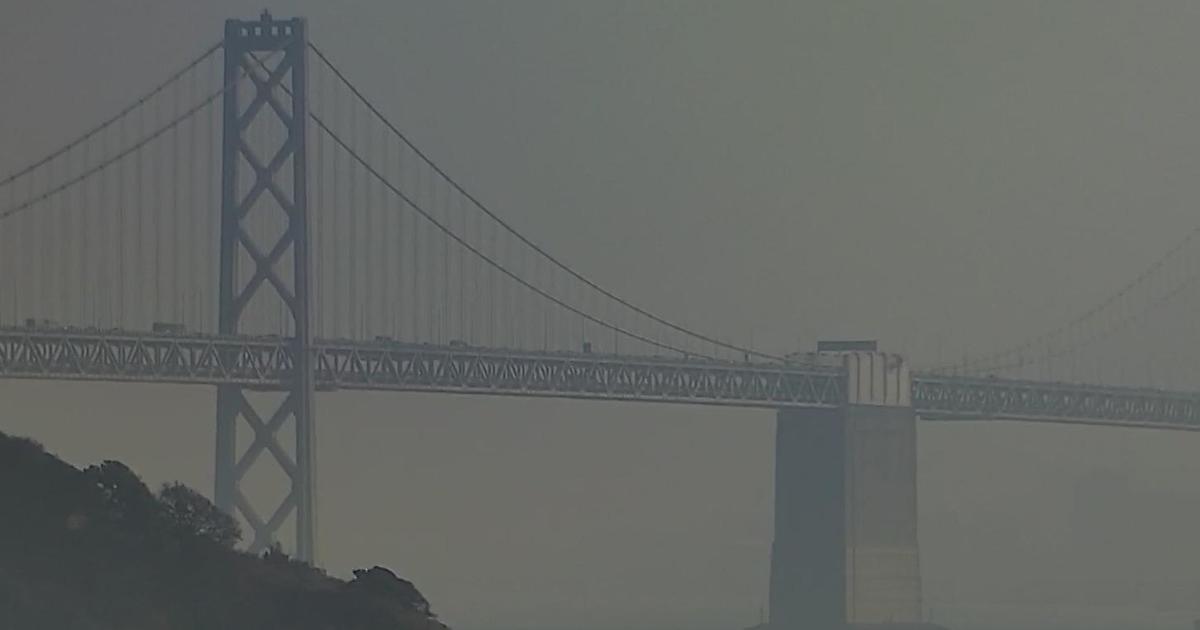ISO Lifts Stage 2 Emergency Averting Rotating Outages Across Bay Area
SAN FRANCISCO (CBS SF) -- The state's Independent System Operator has lifted a Stage 2 Emergency Declaration Monday evening that had Bay Area residents on the alert for more rotating outages.
The ISO made the announcement at about 8 p.m. and thanked residents for conserving energy. A statewide Flex Alert asking Californians to cut lights, turn down thermostats and refrain from running appliances between 3 p.m. to 10 p.m. remains in effect through Wednesday.
California #ISO lifts Stage 2 Emergency declaration. Thank you for conserving.
— California ISO (@California_ISO) August 18, 2020
https://platform.twitter.com/widgets.js
Initially the ISO said up to 3.3 million homes across California may lose power during rolling outages to ease pressure on the state's energy grid. That would make the outage the largest in the state's history.
The agency later adjusted that projected number to approximately 1 million customers because of slightly lower temperatures and successful consumer conservation.
Alameda Municipal Power issued the rotating outage alert at around 2:18 p.m. that there could be one-hour rotating power outages starting at 3 p.m.
Areas affected included the mid-island area west on Sherman to 9th Street; east on Sherman to Paru; south to Dayton and north to Marina Village, as well as the east end of the island (all streets east of Broadway) and the Bay Farm neighborhood.
Alameda Municipal Power later issued a second alert, stating that the state ISO had not yet ordered the outages to begin with California still at a Stage 2 emergency, not a Stage 3 emergency which would call for the power disruption.
A number of Bay Area cities and counties issued alerts to residents about possible rotating outages Monday afternoon, with San Francisco, Moraga, Healdsburg, Calistoga and Napa County all sending out email and text message notifications.
The Contra Costa County Public Works Department on its Twitter account echoed PG&E's warning of rolling power outages.
"Rolling blackouts/brownouts are anticipated to affect residents in parts of Antioch, Brentwood, Concord, El Cerrito and Walnut Creek starting between 4-5 pm today until 10 p.m.," the department said in a tweet. "Outages are expected to last several hours, with no customers impacted overnight."
PG&E's Twitter account posted that some rotating outages in Northern California were likely for Monday afternoon and evening shortly after 1 p.m. The utility did not say where the outages would occur. More information was posted on the PG&E website.
The weekend's rolling blackouts left hundreds of thousands without power in the middle of a heat wave. Severin Borenstien is a member of the Cal ISO Board. He said the organization thought they had the state's energy demands covered, until a series of breakdowns in an already fallible system created an imperfect storm of events they didn't see coming.
"In one case, the wind stopped blowing. In another case, a natural gas power plant tripped off because they had some sort of production problem," said Borenstein. "And when that happened, we were running very close to the edge and we had to start cutting demand."
KPIX 5 learned Monday that part of the reason Californians are facing rolling outages has to do with the state's effort to go green. The state is transitioning away from traditional natural gas power plants, leaving renewable sources to make up the difference.
While Governor Newsom has called for an investigation into how and why the blackouts are happening, Cal ISO's Borenstein said the problem is the result of years of policies, politics and poor planning.
"It falls partially at the feet of the CPUC, partially to the utilities, partially to the legislature, because the legislature has led here with the requirements," said Borenstein. "It's much easier to say 'You shall have 33 percent renewables,' than to say, 'Here's how it will all work.'"
He said the California ISO sounded the alarm in January to the CPUC. While some things were done -- with four more days of potential rolling blackouts -- he says it was clearly not enough.
Now consumers are paying the price. Borenstein told KPIX 5 that a permanent fix will take years of beefing up the state's reserves, expanding power sources and investing in more infrastructure.
In the meantime, the burden is the consumers' to bear by cutting back on consumption and keeping the grid from being overloaded.
"I don't know, it's not a good scene, said Corte Madera resident Mary Harth, who lost her power. I don't know what the solution is, but I know it's really inconvenient and is going to potentially shut down a lot of businesses that are working from home, and schools."
PG&E issued a similar warning for Bay Area customers Sunday evening but the state power grid was able to meet demands and no outages were required.
On Friday evening, the Independent System Operator (ISO) declared a statewide Stage 3 power emergency as excessive heat drove up electricity use and set temperature records across the Bay Area, forcing rolling blackouts across the state until the power grid stabilized. There were additional rolling blackouts on Saturday, though most of those outages were outside the region.
The rolling blackouts were the first in California in 20 years.
The announcement comes an hour after Gov. Gavin Newsom apologized to California's residents for the recent rolling blackouts, saying state officials "failed to predict and plan" for the energy grid demands brought on by the current record-breaking heat wave while outlining steps the state was taking to try to avoid more power disruptions.
"You can't control the weather but you can prepare for these weather events. Let me make this crystal clear: we failed to predict and plan for these shortages and that's simply unacceptable. I'm the governor. I'm ultimately accountable and will ultimately take responsibility."
PG&E urged customers to conserve electricity in response to the California ISO statewide Flex Alert. Extreme heat is forecast to last at least through the middle of this week. Prolonged heat through Thursday is expected to drive electricity demand higher, as nighttime temperatures are also forecast to be above average.
Outages are estimated to last one to two hours. PG&E's Emergency Operations Center is activated and working closely with the CAISO to support this event.
Between 3 p.m. and 10 p.m., PG&E and the California ISO is urging consumers to:
- Set air conditioning thermostats to 78 degrees, if health permits.
- Defer use of major appliances.
- Turn off unnecessary lights.
- Unplug unused electrical devices.
- Close blinds and drapes.
- Use fans when possible.
- Limit time the refrigerator door is open.
Consumers can also take steps to prepare for the Flex Alert by doing the following before 3 p.m.:
- "Pre-cool" their homes, or lower air conditioning thermostats.
- Charge electric vehicles.
- Charge mobile devices and laptops.
- Run dishwashers, washing machines and other major appliances.
- Set pool pumps to run in the morning or during the night.
Emily Turner contributed to this story.



